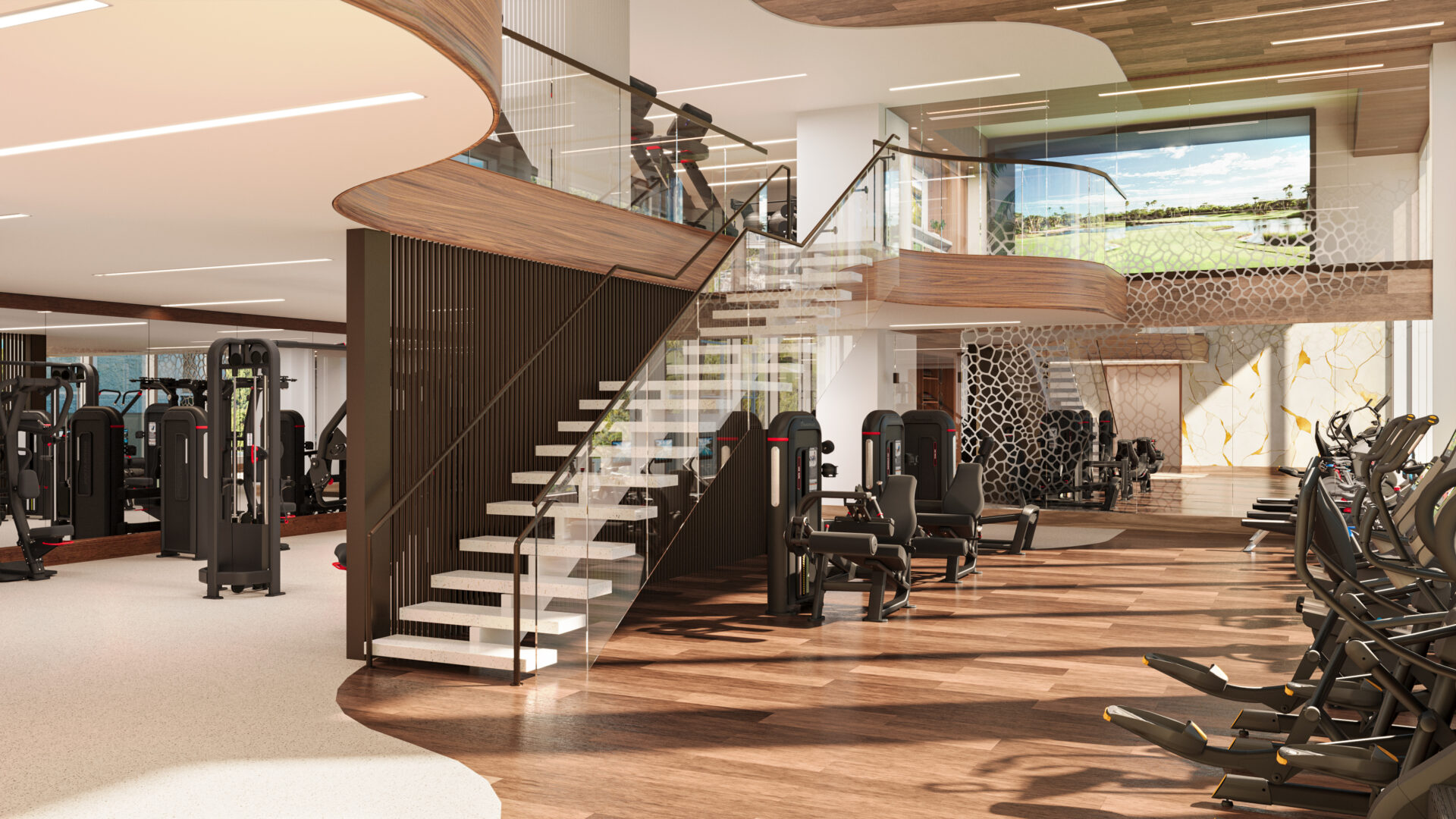Building a home gym is becoming increasingly popular. The benefits of a home gym are numerous: convenience, cost savings over time, and the ability to tailor your workout space to your personal preferences.
A well-planned home gym can eliminate the hassle of commuting to a commercial gym, offering you the freedom to work out whenever you want. This flexibility can significantly boost your motivation and consistency in your fitness journey.
With careful planning and consideration, you can create an effective workout space that suits your needs and helps you stay committed.
1. Start with the Essentials
When building a home gym, prioritizing essential gym equipment is crucial for creating a versatile and effective workout space.
Key Foundational Items:
Power Rack: A robust structure that supports various exercises such as squats, bench presses, and pull-ups. Its versatility makes it a cornerstone for strength training.
Adjustable Bench: Provides support for multiple exercises like bench presses and dumbbell rows. The adjustable feature allows you to target different muscle groups by changing the angle.
Barbell and Plates: Fundamental for weightlifting exercises including deadlifts, squats, and bench presses. Opt for a quality barbell and a variety of plates to accommodate different strength levels.
These foundational items enable diverse workouts that cater to your fitness goals. Investing in them ensures that you have the necessary tools to perform a wide range of exercises, thus contributing significantly to overall fitness progress.
2. Budget Wisely
Setting a Realistic Budget
Creating a home gym budget requires balancing your fitness goals with the available space and financial constraints. Begin by identifying the core equipment necessary for your workouts. Allocate funds based on priority items to avoid overspending.
Expense Tracking Tools
Utilize tools and apps like Microsoft Excel or Google Sheets to track expenses throughout the buying process. These platforms allow you to organize costs, set spending limits, and monitor your budget in real-time.
Strategic Purchases
Maximize savings by timing purchases around major sales events such as Black Friday or Cyber Monday. These events offer substantial discounts on fitness equipment, enabling you to acquire high-quality items without breaking the bank.
3. Buy Used Equipment
Opting for secondhand gym equipment presents several advantages. The most obvious benefit is the significant cost savings. High-quality gym gear can be pricey, but purchasing used items allows you to stretch your budget further while still acquiring necessary tools.
Another advantage is sustainability. Reusing equipment reduces waste and supports a circular economy, making it an eco-friendly choice. This approach not only benefits your wallet but also contributes positively to the environment.
For locating affordable secondhand items, consider these platforms:
Craigslist: A popular marketplace for local deals on used gym equipment.
Facebook Marketplace: Allows you to browse listings from people in your community.
OfferUp: Another useful app where you can find great bargains on fitness gear.
Garage Sales & Thrift Stores: Sometimes overlooked, but they can offer hidden gems at unbeatable prices.
These platforms make it easy to find cost-effective solutions without sacrificing quality or performance for your home gym setup.
4. Opt for Versatile Equipment
Investing in versatile gym equipment is a smart move, especially if your workout space is limited. Multifunctional tools like resistance bands and kettlebells offer a wide range of exercise options.
1. Resistance Bands
These are lightweight, portable, and can be used for strength training, flexibility exercises, and even rehabilitation. Their versatility allows you to perform exercises that target different muscle groups without needing bulky equipment.
2. Kettlebells
These compact weights are perfect for a variety of workouts, from cardio to strength training. You can use them for swings, lifts, and squats, making them a valuable addition to any home gym.
Choosing these space-saving solutions enhances workout variety while optimizing the available area. Multifunctional tools not only save space but also add diversity to your fitness regimen, keeping your workouts engaging and effective.
5. Flooring Matters
Choosing the right flooring material is essential for safety and durability in a home gym.
Durable flooring options like horse stall mats offer excellent support and cushioning, protecting both your equipment and your floors.
These mats are cost-effective and can handle heavy weights, making them an ideal choice.
Rubber gym flooring solutions provide shock absorption, reducing the risk of injury during high-impact exercises.
Proper flooring also helps with noise reduction, creating a more pleasant workout experience.
Ensuring your gym floor is both durable and supportive enhances overall workout efficiency and longevity of your equipment.
6. Organize Your Space Effectively
Planning your gym layout is crucial for maximizing functionality, especially when dealing with limited square footage. Effective space optimization ensures you can move smoothly between exercises without unnecessary distractions.
Keep Pathways Clear: Avoid clutter to maintain a safe and efficient workout environment.
Use Wall-Mounted Storage: Hooks, shelves, and racks can store equipment like resistance bands or dumbbells.
Designate Zones: Create specific areas for different types of workouts, such as cardio, strength training, and stretching.
Incorporate Mirrors: Mirrors help monitor form and make the space feel larger.
7. Create a Motivating Environment
An inspiring workout space can significantly boost your motivation levels. Incorporate elements that align with your personal preferences:
Music Systems: Installing a quality sound system or using wireless speakers can keep you energized with your favorite workout playlist.
Ambient Lighting: Adjust lighting to create a mood that enhances focus and energy. Consider LED strips or smart bulbs for customizable lighting options.
Personal Touches: Add motivational quotes, posters, or even paint the walls in colors that inspire you.
Customizing your gym environment fosters a motivating atmosphere tailored to your needs.
8. Gradual Expansion Strategy
When building your home gym, gradual equipment acquisition is key. Start by investing in essential items like a power rack, adjustable bench, barbell, and plates. These foundational pieces allow for a wide range of exercises and provide a solid starting point.
Allow room for future upgrades: As your fitness needs evolve, you can gradually add more specialized equipment. This approach helps you avoid unnecessary expenses and prevents your gym from becoming cluttered with unused gear. Regularly assess your workout routines and identify new equipment that could enhance your training sessions over time.
9. Maintenance and Cleaning Practices
Regular maintenance and cleaning are crucial for prolonging the lifespan of your gym equipment and maintaining hygiene standards. Establish a routine that includes:
Wiping Down Equipment: Use disinfectant wipes or sprays to clean surfaces after each use.
Inspecting for Wear and Tear: Regularly check cables, pulleys, and weights for signs of damage.
Lubricating Moving Parts: Ensure smooth operation of machines by applying appropriate lubricants.
Vacuuming and Mopping Floors: Keep your gym floor free of dust and debris to prevent accidents.
By incorporating these practices, you’ll ensure a safe, clean, and long-lasting workout environment.
10. Planning for Distractions
Minimizing distractions at home is crucial for maintaining workout consistency. Consider potential interruptions that are unique to your living situation:
Family Members: Establish a designated workout time and communicate it with family members to avoid interruptions.
Noise: Use noise-canceling headphones or a white noise machine to block out household sounds.
Pets: Create a separate area for pets during workout sessions to prevent them from wandering into your space.
Identifying these distractions and planning accordingly ensures a smoother, more focused workout experience.
Conclusion
Creating a successful home gym can be an exciting and fulfilling journey. By focusing on essential equipment, budgeting wisely, considering used gear, and opting for versatile pieces, you lay a strong foundation.
Take actionable steps: Tailor your gym to suit your individual needs.
Enjoy the journey: Appreciate each phase of setting up your space.
The article “Building a Home Gym: Insider Tips” emphasizes the importance of planning, organization, and regular maintenance. These strategies ensure that your fitness space remains effective and enjoyable.
FAQs (Frequently Asked Questions)
What are the essential items needed to start building a home gym?
The essential items for a home gym include a power rack, adjustable bench, barbell, and plates. These foundational pieces allow for diverse workouts and contribute significantly to overall fitness progress.
How can I budget effectively when setting up my home gym?
Setting a realistic budget is crucial. Consider your goals and available space. Use tools like Excel or Google Sheets to track expenses, and time your purchases around sales events like Black Friday to maximize savings without sacrificing quality.
Is it worth buying used gym equipment?
Yes, buying used equipment can be cost-effective and sustainable. Platforms like Craigslist and Facebook Marketplace offer affordable secondhand items that can help you save money while still building a functional gym.
Why is flooring important in a home gym?
Choosing the right flooring material is vital for safety and durability. Proper gym flooring can prevent injuries and protect your equipment, ensuring a safe workout environment.
How can I create a motivating environment in my home gym?
Enhance motivation by incorporating elements such as a good music system or ambient lighting tailored to your preferences. Personal touches in your gym design can significantly boost your workout experience.
What maintenance practices should I follow for my home gym?
Establishing regular cleaning routines is essential for prolonging the lifespan of your equipment and maintaining hygiene standards. Regular maintenance helps ensure that your workout space remains safe and inviting.

